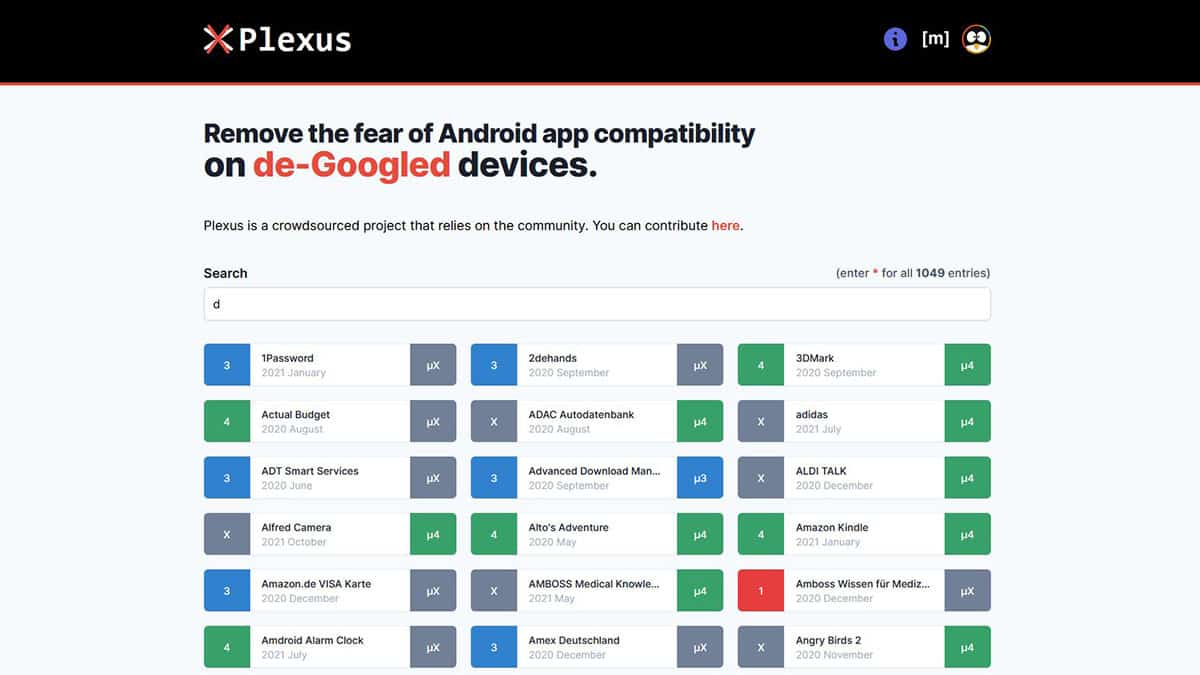This is a text automatically translated from Italian. If you appreciate our work and if you like reading it in your language, consider a donation to allow us to continue doing it and improving it.
Content index
One of the main concerns when you want to try degoogle your smartphone is the fear that some application isn't working properly. Unfortunately, it is a completely well-founded fear and we know it well, so much so that we have specifically created a list of applications with problems on smartphones degoogled which you find here: A la carte. And we got the idea right from Plexus!
Plexus is a project developed by Techlore, a leading blog focused on privacy and security. Techlore is also famous for making informative videos (in English) available on YouTube but obviously also up PeerTube And Odysee.
The project Plexus born as collaborative site: initially anyone could edit a (terrible) .csv file and put the changes online on the site. With the arrival of the application we are talking about today, things have changed a bit. The data file has become a more practical .json 1 and they are developing an API (a programming interface) to allow modifications easily and exclusively through the application 2.
Plexus, find out if an application works on your degoogled smartphone
The application is very nice, well made and equally simple to use and understand. There are two tabs one with all your Plexus data, the other with the applications you have installed on your smartphone.
As mentioned, Plexus it is used to understand whether an application works or not on a smartphone degoogled. Unfortunately, several applications can cause problems if they do not find a perfectly intact operating system and above all if they do not find the original Google services installed. Some smartphones, which we have learned about in the past such as /And/ or iode, they use their own microG to simulate Google services. For some applications, unfortunately, this thing is not crazy.
How Plexus works




For each application there are two scores:
- the one on the left is for smartphones completely degoogled and without microG;
- the one on the right is for smartphones with microG installed, as we said for example those of /And/, Of iode or even of CalyxOS.
Scores range from X to 4:
- X = application not tested
- 1 = Unusable
- 2 = Acceptable
- 3 = Good
- 4 = Perfect
By clicking inside the various applications you can write the reasons that led to the vote.
Download
• • • •Extra tip for the experts
Let's add a little extra tip that we received. If you need to pass SafetyNet and therefore try to run applications that otherwise would not work in a degoogled system, you can try this sequence:
On lineageOS, /e/, iodéOS, lineageOS for microG:
- To install microG.
- To install magisk (to enable root and other functions).
- Enable zygisk from within magisk settings. Magisk->Zygisk->Enable.
- To install Universal SafetyNet Fix.
- To install microG installer (necessary for signature spoofing and giving full access to the system to microG, already present on /e/, iodéOS, lineageOS forh microG.
After completing the above steps, Google's SafetyNet is passed. Furthermore, within the magisk settings it is possible to add and/or remove applications to which root is applied:
Magisk->Enforce DenyList->Enable
Magisk->Configure DenyList->Apps
Join communities
If you have found errors in the article you can report them by clicking here, Thank you!







